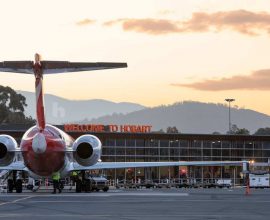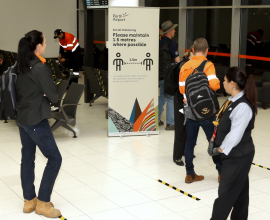Sleep pods, new hotel on the horizon for Sydney Airport
Airport hotels have had something of a resurgence recently, with new developments opening at a number of Australia’s major airports.
The trend is part of a push by airports to create a more seamless passenger experience, while also keeping pace with continued passenger growth.
The recent opening of the Atura Adelaide Airport Hotel was met with strong reviews, providing direct access to the airport’s domestic and international terminals and offering conference and meeting spaces close to the planned airport business district.
The new Pullman Brisbane Airport Hotel has also been well received, with the 132-room facility also boasting a restaurant and bar, along with a top floor Executive Club Lounge and Bar overlooking the airport.
For Sydney Airport, its new hotels continue to deliver strong occupancy rates as more passengers seek the convenience of accommodation within the airport precinct before or after their flight.
Far from resting on their laurels, the team that oversaw the development of the Mantra Hotel at Sydney Airport and the purchase of the Ibis Budget Sydney Airport in 2017 now have further plans to revolutionise how passengers stop and revive when they travel.
Sydney Airport Head of Hotel Business Geraldine Bourgarel says positioning the airport precinct as a genuine meeting place for business travellers, while also meeting the short term needs of those looking to rest their head before or after a flight, is the next priority.
Innovative new sleep pods at T1 International arrivals are planned, providing a convenient location for passengers to refresh after a long flight.
Expressions of interest are being sought for about 20 sleep pods, which Bourgarel notes has attracted strong interest both domestically and globally.
She says it’s about adding to the seamless customer experience the airport seeks to achieve across the breadth of its airport services.
“It’s really something we want to try and we’ve got plenty of opportunities to explore,” she says.
“We think these will be very popular when passengers have an early flight and they’ve just arrived and can’t check in to their hotel.
“They really want somewhere convenient to refresh before their first meeting – and there is an element of fun with it as well.”
On a larger scale, the airport is seeking to select the provider for a new, 430-room dual branded hotel by the end of the year.
The hotel would be constructed adjacent to the domestic terminal T2/3 precinct’s planned ground transport interchange and would include both affordable and luxury options.
Bourgarel says the inclusion of a pool, rooftop bar and conference facilities of a scale not currently available at the airport would be a particularly exciting addition, noting passengers often need to stay in the city to access conference facilities at the moment.
“We want to really broaden the connection between the airport and hotel,” she says.
“If we have the meeting facilities ranging from mobile desks, to boardrooms to large conference spaces, it really becomes a place to stay and a fantastic meeting point.”
She notes the recently announced Sydney Gateway will also improve connection to the facility for Sydney locals meeting interstate colleagues, while the ground transport interchange is expected to improve public transport options to the site.
The proposed new hotel development highlights the airport’s continued focus on expanding passenger facilities at the airport after it opened its first owned hotel – the Mantra – in 2017.
Together with the neighbouring Ibis Budget Hotel, there are now a range of options at different price points within the domestic terminal T2/3 precinct.
The Ibis Budget Hotel is currently undergoing a 78-room expansion to be completed mid next year to meet growing hotel demand.
Bourgarel says working with Accor as the operator of both hotels had allowed the team to create a tailored offering for passengers between the two facilities.
“The Mantra hotel rates really highly in terms of customer reviews, but they only have an average stay of less than a day,” she says.
“People don’t expect a lot of facilities for such a short stay, they want to rest in comfortable rooms and they want to keep moving.”
Customer research found fast internet speeds, good customer service, a comfortable bed and good shower pressure were the key issues the typical traveller was seeking in an airport hotel.
The Mantra hotel’s restaurant has also emerged as a popular place for guests of both hotels, with Ibis customers taking advantage of more affordable rooms and then wandering next door for breakfast or an a la carte dinner.
She says the Ibis budget hotel was also performing well, with its more playful atmosphere and family rooms appealing to travellers looking for a more affordable but equally convenient option.
Both hotels are an easy walk to the domestic terminals and improved wayfinding to the terminals had made it easier for passengers to make the short walk from the hotels to domestic check-in.
Bourgarel says with the airport growing at more than a million passengers per year, demand for quality airport hotel accommodation is likely to remain very strong.
“We live in a fast-moving environment, and the fact that you get the convenience to sleep next door to your airport check-in counter is really appealing for passengers,” she says.
“We’ve heard their hotel accommodation needs, now our focus is on delivering.”





